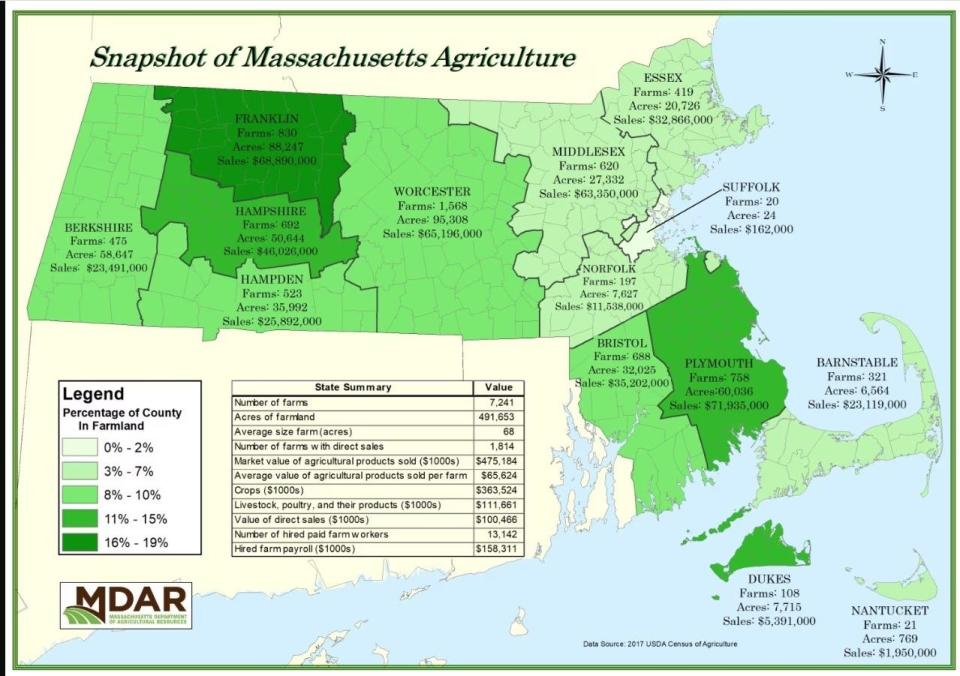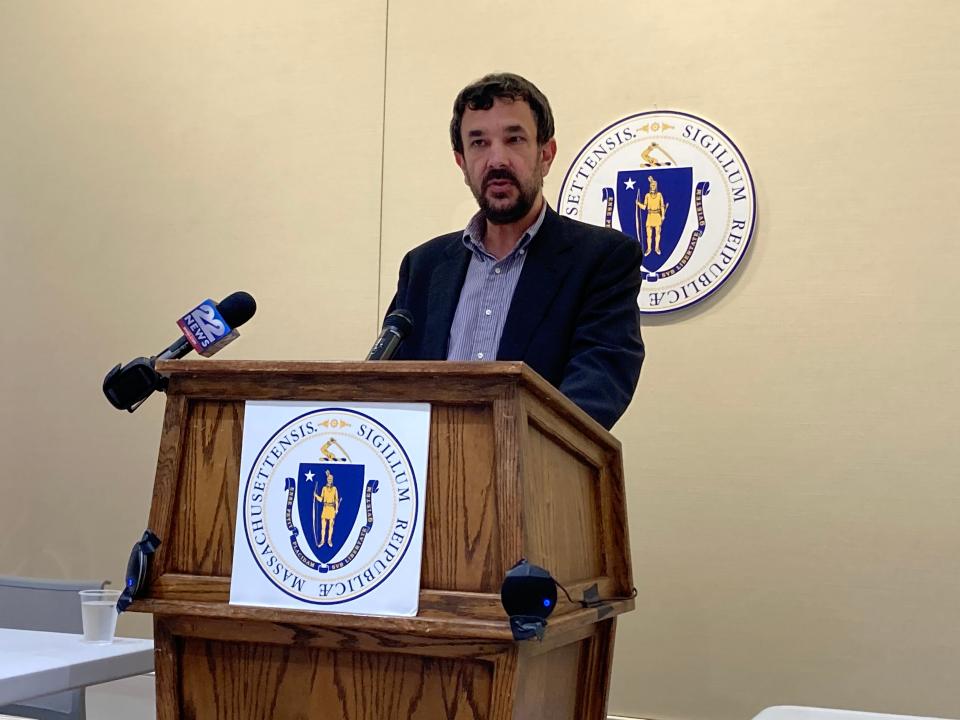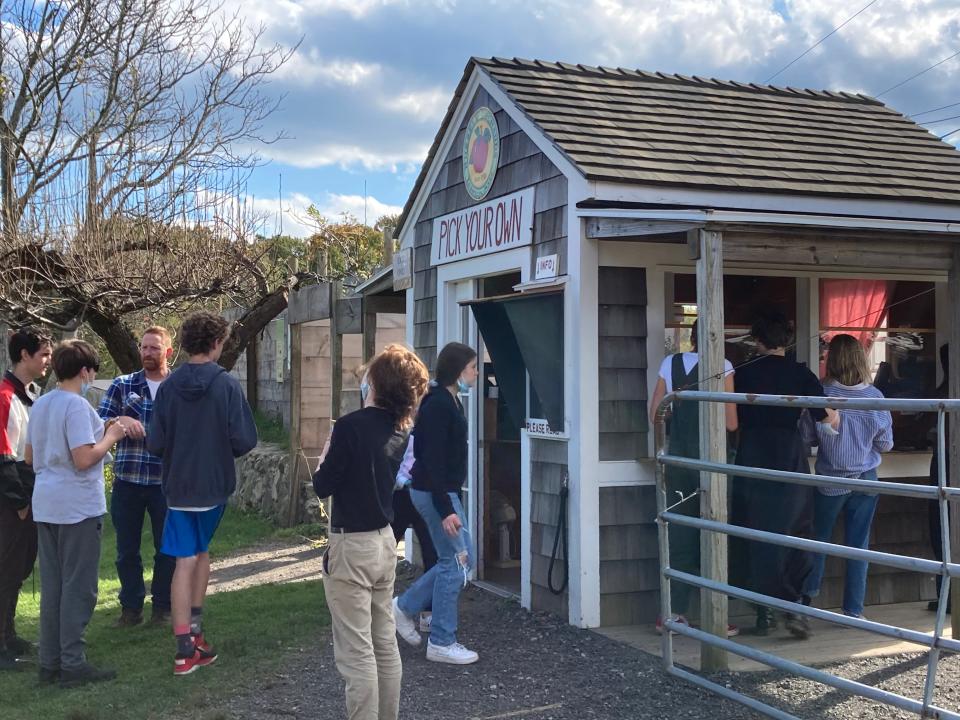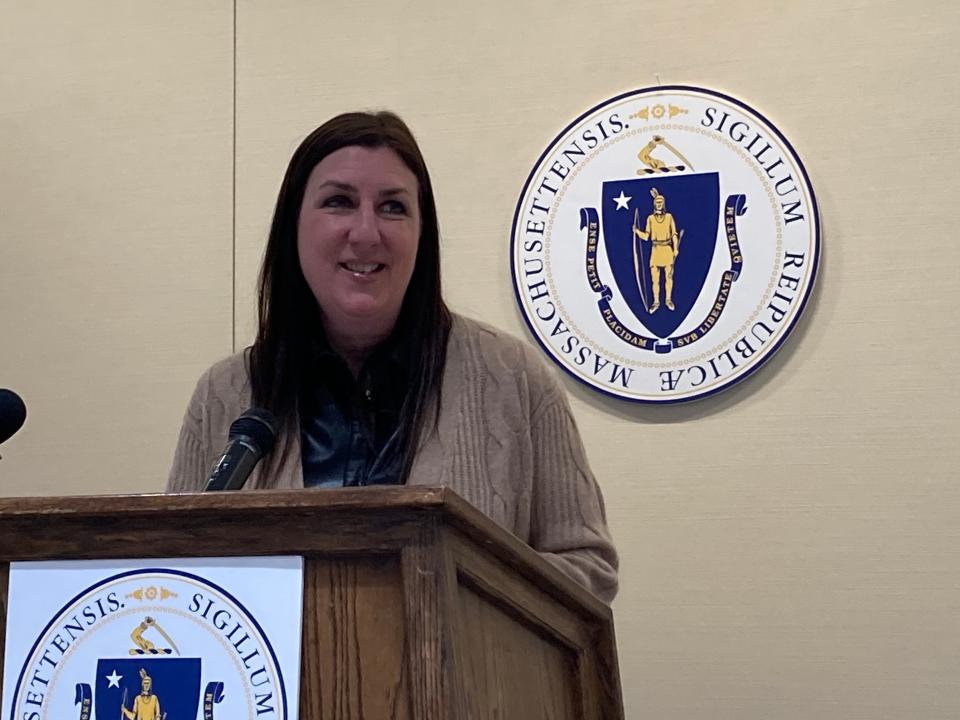Mass. agriculture department unveils plan to preserve, expand state's farmland
Bumper stickers visible around Massachusetts read “No farmers: No food.” But they could read instead “No Farmland: No Food.”

A document prepared by the Massachusetts Department of Agricultural Resources found that Massachusetts farms are endangered. Subjected to high land prices (only Rhode Island and New Jersey have higher prices) and development pressure, climate change, lack of infrastructure and technical and financial supports, they are disappearing fast.
And once farmlands are developed for other purposes, from roads and soccer fields to housing, office and retail space, they are never recovered.
The report, Massachusetts Farmland Action Plan 2023-2050, predicts the state will lose 78,000 acres of farmland by 2040 if nothing is done. That translates to almost a fifth of the current 500,000 acres now devoted to farming.

“A healthy agriculture sector is vital to Massachusetts,” said Winton Pitcoff, deputy commissioner at the Department of Agricultural Resources and legislative and policy director, as he presented the report to legislators Wednesday. The report, created by the Department of Agricultural Resources with the participation of some 600 industry stakeholders, offers a road map on how to achieve that goal.
The plan calls for sweeping policy changes on the state level, involving collaboration between state departments, agencies and conservation organizations, nonprofits and educational institutions, and the expansion of the UMass extension service to better serve farmers.
Multipronged approach
It calls for a multipronged approach that incorporates everything from accelerating new land purchases by the state specifically for use as farms to providing job training and technical support to existing and future farmers, and even ensuring access to farmland to immigrants, Native populations and people of color. It lines up with other initiatives announced by the state including the clean energy and climate resilience plans.
“Every dollar invested in farms is money invested in climate resiliency, food security, land conservation, public health,” Pitcoff said. Farming touches all sectors of life as a nutrition and public health issue, a housing and transportation issue, a labor issue, an education issue and a matter of equity, he said.

“Like so many other states, Massachusetts was founded on farming,” said Sen. Robyn Kennedy, D-Worcester. She said the report also acknowledges the importance of the Nipmuc people, who held and shepherded the land before the arrival of the Europeans. “The action plan acknowledges the past while also looking to the future of farming in Massachusetts.
What factors are working against farmers?
Factors hampering the state’s agricultural sector include:
Low return on investment: Farmers earn 94 cents for each dollar they spend
The high cost of land: $13,700 per acre
Aging farming community: The average age of farmers in Massachusetts is 60
Soil degradation
Climate change
The availability of cheaper farm goods produced in states with factory-production farms
Massachusetts farms are small, about 50 acres on average, but produce approximately $475 million in goods and have a $10 billion yearly impact on the state’s economy, according to the report.
“There’s a uniqueness to our farms here,” Kennedy said, discussing the relatively small holdings when compared to states like Kansas and Iowa. In addition to offering fresh, locally-grown produce, farms create community, offer gathering places and educational and recreational opportunities, and introduce residents to new foods, new tastes and new ways to prepare them.

“I am very fortunate to represent a district that is rich with wonderful farms, big and small,” Kennedy said. There are expansive orchards and acres of crop production, but there is also a strong urban gardening movement in Worcester, ensuring city residents have access to fresh food, she said.
What's in the action plan?
The action document contains some measures already put into progress, Pitcoff said, highlighting some of the report details:
A Department of Agricultural Resources program that offers technical help to farmers
A plan to protect an additional 75,000 acres included on 960 properties
Plans to review properties enrolled in the state land-leasing program to identify areas that are suitable for agriculture and making them available to farmers
Emphasis on urban agriculture to increase production and yield
The state protects about 27% of the 6.7 million acres of land that is Massachusetts through a variety of conservation programs.
Those programs protect important watershed areas to preserve the purity of its drinking water and protect wetlands along the coast and farmlands through agricultural preservation restrictions. Of the 1.4 million protected acres, the state owns 50%, municipalities 25%, while the remainder is owned privately and through land trusts, conservation organizations and other entities.
“There has been a steady loss of farmland over the last 120 years, with 27,000 acres lost in the last 15 years,” Pitcoff said, adding that it translates to a daily five-acre loss.
What’s needed to preserve existing farmland and increase it, according to report:
Changing Department of Agricultural Resources regulations to allow it to purchase land to preserve it for farm use in order to transfer the property to a conservation entity
Greater financial investment by the state and a streamlined process to acquiring farmland up for sale before it is purchased by developers
Increased access to farmland for traditionally marginalized populations
Education for existing and aspiring farmers on sustainable agricultural methods
Public education for consumers on the importance of farms, not just to the economy but for food security, proper nutrition, overall health and well-being
Establish a no-net-loss policy that assures farmers they will not lose value when preserving land through conservation protections
Invest in farmland restoration focusing on returning fallow fields to production or increasing the richness of tired soil
Revise property tax benefits to include small properties
Increase technical and professional services to farmers to help keep them in the business
Offer estate and succession
Revise activities allowed on farmland to include agritourism and other nonagricultural activities
Encourage municipalities to adopt Right to Farm laws
Invest in urban farming ventures
Zoning changes to favor farms
Loss of agricultural land doesn’t affect just the farmer but impacts the whole community through job losses and loss of products that, when purchased, return money to the local economy. It also impacts infrastructure if the land is developed bringing new stresses to local schools and municipal services.

In closing the presentation, Rep. Hannah Kane, R-Shrewsbury quoted the opening paragraph of the executive summary penned by Department of Agricultural Resources Commissioner Ashley Randle:
"The hundreds of thousands of acres of farmland in Massachusetts are among our greatest resources. Under the stewardship of thousands of farmers, this land feeds us, contributes to our local economy, protects vital natural resources and plays an essential role in our work to address climate change and mitigate its impact. We must protect this resource with thoughtful investments, wise policy and collaborative efforts that engage public and private sector partners," she said.
While the Legislature is not required to act on the document, lawmakers will be required to enact some suggested policy changes and approve funding requests to move forward with some of the provisions.
This article originally appeared on Telegram & Gazette: Consumer education, technical assistance and job training included

